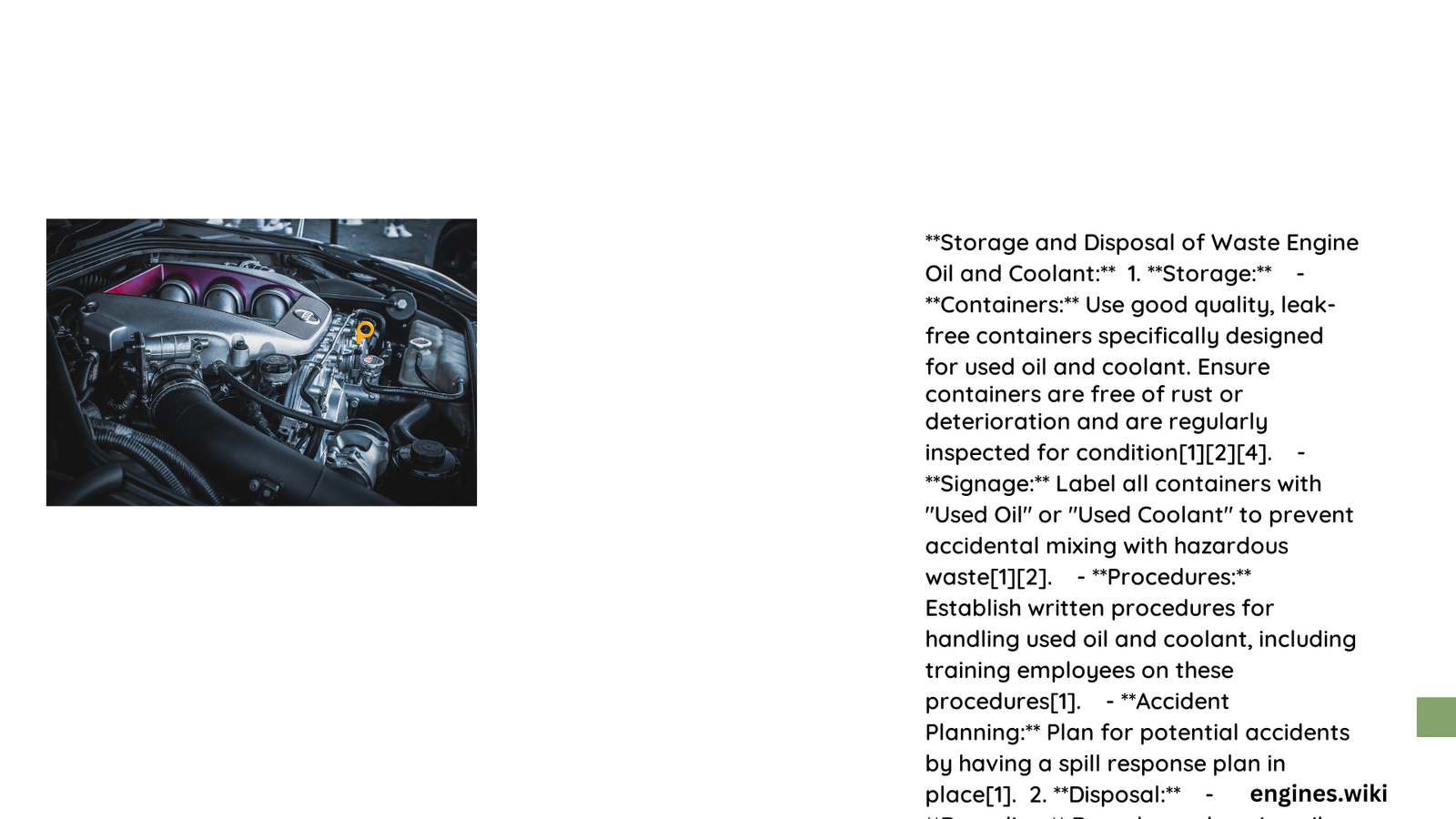Proper management of waste engine oil and coolant is crucial for environmental protection and legal compliance. Vehicle owners and mechanics must follow specific guidelines to ensure safe storage, transportation, and disposal of these hazardous fluids. Incorrect handling can lead to severe environmental contamination, potential legal penalties, and significant ecological damage.
What Are the Proper Container Requirements for Waste Engine Oil?
Selecting the right storage containers is the first critical step in waste engine oil management:
Container Specifications
- Material: Use robust, leak-proof containers
- Size: Recommended 55-gallon closed-top drums
- Condition: Structurally sound, no rust or structural defects
- Surface: Store on oil-impermeable surfaces like sealed concrete
| Container Type | Recommended Material | Maximum Capacity |
|---|---|---|
| Drums | Steel | 55 gallons |
| Portable Containers | High-density Polyethylene | 5-20 gallons |
| Industrial Tanks | Reinforced Steel | 500+ gallons |
Labeling and Identification
Proper labeling prevents cross-contamination and ensures regulatory compliance:
– Use clear “Used Oil” labels
– Include date of collection
– Indicate source of oil
– Maintain separate containers for different fluid types
How Can You Safely Store Coolant?

Coolant storage requires similar meticulous attention:
Coolant Storage Guidelines
- Use chemically compatible containers
- Prevent mixing with other substances
- Store in sealed, labeled containers
- Keep away from direct sunlight
- Maintain consistent temperature
Potential Contamination Risks
Improper coolant storage can lead to:
– Environmental pollution
– Groundwater contamination
– Toxic hazards for wildlife
– Potential legal violations
What Are the Best Practices for Oil and Coolant Disposal?
Recycling Procedures
- Transport to certified recycling facilities
- Use authorized hazardous waste transporters
- Obtain proper documentation
- Follow state and federal regulations
Environmental Considerations
- One gallon of improperly disposed oil can contaminate 1 million gallons of water
- Recycling reduces environmental impact
- Prevents heavy metal and chemical leaching
What Legal Consequences Exist for Improper Disposal?
Potential Penalties
- Significant monetary fines
- Environmental cleanup costs
- Potential criminal charges
- Revocation of business licenses
Compliance Requirements
- Obtain necessary permits
- Maintain detailed disposal records
- Train personnel on proper handling
- Regular environmental audits
How to Choose a Reliable Disposal Service?
Evaluation Criteria
- EPA identification number
- Comprehensive insurance
- Proven track record
- Transparent disposal methods
- Competitive pricing
Recommended Steps
- Research local certified facilities
- Request disposal documentation
- Verify compliance credentials
- Compare service offerings
- Establish long-term partnership
Technical Recommendations
Oil Recycling Process
- Re-refining removes impurities
- Converts to new motor oil
- Reduces virgin oil consumption
- Minimizes environmental footprint
Cost Considerations
- Recycling costs: $0.50 – $2.00 per gallon
- Varies by region and facility
- Long-term savings through responsible management
Final Recommendations
Responsible waste engine oil and coolant disposal requires:
– Proper storage
– Regular training
– Compliance with regulations
– Environmental consciousness
– Professional disposal services
References:
– EPA Used Oil Management Guidelines
– Environmental Protection Resources
– Hazardous Waste Disposal Regulations
